Everyone comes to an age where they start to think about proper nutrition. Some make this decision because of being overweight, while others struggle with illnesses. Lost in thought, a person rereads a lot of literature in search of a suitable option for healthy eating. How do you choose a diet to get the most out of it? A professional nutritionist can advise you. After all, if the question arises of changing regimes, amateur performance can get expensive.
Understand that food can heal and sometimes paralyze. Therefore, any diet should be based on the laws of natural harmony, only then will the diet be beneficial.
Nature created everything in an incredible way. There are 4 seasons, 4 stages of growth, 4 cardinal points. Surprisingly, there are also four blood groups. Each of them has its own composition. Today, a special diet for the blood group has been developed, in which certain foods are selected for each of them.
Basic principles of diet
Based on many years of medical practice, numerous consultations on nutritional issues, having supported the theory with the research of his father, the American physician Peter D'Adamo showed the world a unique nutritional method, known morelater under the name of "blood type diet". It was based on the assumption that weight, height and, of course, skin color are not the main differences between people. It all depends on the blood type.
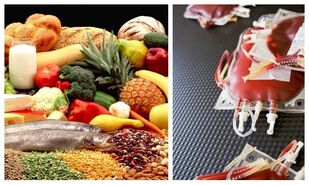
Lecithins, which saturate all tissues in the human body, are taken with food. These important building blocks of cells interact with blood groups in completely different ways. In terms of chemical composition, meat lecithins differ significantly from the component of plant foods. In order to have excellent health and longevity, you need to eat these building materials which will bring more benefits to the body.
Menu selection based on common ancestors
The blood type diet is based on an evolutionary division developed by American immunochemist William Clouser Boyd. Based on this theory, owners of the same blood groups have a common past. This allows you to take an exciting and nutritionally quite rewarding time trip.
- Blood group 1. According to the doctor, they are human hunters. He believes that such a group is the blood of the very first people on the planet. Of course, the best nutrition is a diet rich in meat.
- Group 2. This population is classified as farmers. The ideal diet for this category of people is fairly predictable. They are advised to eat more and a variety of vegetables, and to minimize red meat in the diet.
- Group 3. It defines the nomads. Owners of such blood are distinguished by strong immunity and unpretentious digestion. However, people belonging to the third group should be very careful with dairy products. After all, their lactose intolerance is a historically confirmed fact.
- Group 4. These people are a unique mystery. This rare blood appeared quite recently and illustrates the evolutionary variability, as it combines the characteristics of different groups.
Product table
For your convenience, below is a table of food lists to include in menus. For example, it is known that the diet should contain vegetables if a person has blood group 2. The diet, the table of recommended foods confirms this, although it may contain other components.
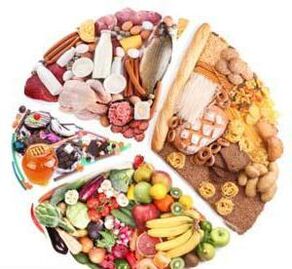
Healthy products
| 1st group | 2nd group | 3rd group | 4th group |
| Fish, meat, various seafood, fruits (except acids), vegetables, green tea, rye bread, decoctions with rosehip herbs, mint, ginger | Cheese (low fat varieties), dairy products, legumes, soy milk, coffee, pineapple, fruit juice, green tea and red wine | Meat (excluding chicken and duck), dairy products (non-fat), cereals (except buckwheat and wheat), eggs, fruits, vegetables, legumes | Rabbit, turkey, lamb, fish, dairy products, olive oil, legumes, nuts, cereals, fruits (not sour), vegetables, green tea, coffee, herbal teas |
In addition to healthy foods, the blood group diet contains so-called neutral products. They are listed in the following table:
| 1st group | 2nd group | 3rd group | 4th group |
| Beer, raspberry herbal teas, chamomile, sage, ginseng, valerian, wine (red and white) | Hard milk cheese (low fat), feta cheese, cottage cheese | Soy products, orange juice, black tea, wine, beer, coffee | Herbal teas (raspberry, mint, valerian), beer, wine |
Harmful products are also highlighted in a separate table.
| 1 group | 2 groups | 3 groups |
| Cabbage (except broccoli), pickles, mayonnaise, ketchup, corn flour (all products made with it), alcohol, raspberry and aloe leaf tea, coffee | Dairy products, meat, peppers, wheat, sugar, ice cream, butter, herring, halibut, seafood, caviar, rhubarb, mandarins, bananas, oranges, coconut, soft drinks, black tea | Fish, shrimp, shellfish, duck, chicken, pork, corn, lentils, olives, peanuts, tomato juice |
Particularities of the representatives of the 1st group
Every "hunter" must know his positive aspects. But you shouldn't ignore the risk factors. The blood group 1 diet requires a high protein food, meat, in the diet.
Such people, as a rule, are strong and autonomous, fairly determined.
Positive:
- excellent digestive tract;
- excellent immunity;
- efficiency of cell metabolism.
With all this, the owners of the 1st group also have weaknesses. It is quite important to know them. It is worth noting that the diet of blood group 1 fully takes into account all these characteristics.

Risk associated with:
- problems with blood clotting;
- predisposition to various inflammatory processes;
- a tendency to develop ulcers due to high acidity;
- allergies.
So you can take care of your own health, choosing the optimal products according to the group to which you belong.
However, the question of the Rh factor often arises. Studies have shown that this should not affect the formulation of the diet. 1 blood group - negative and positive - speaks of the same synthesis of nutrients. This means that the diet is the same. As a result, the diet menu differs according to the blood group, and not at all according to the Rh factor.
Approximate menu for 1 group
Day 1
Breakfast.Rye bread sandwich with a little butter. A slice of goat cheese is also excellent. Prepare an herbal tea as a drink.
Lunch.Chicken soup with sorrel and broccoli (about 250 g). Make a salad of liver (chicken or beef can be used), spinach and tomatoes. Season with soy sauce.
Snacks.Walnuts or almonds (50 g). The fruits are perfect - banana, apple, plum.
Dinner.Add the oyster mushroom garnish (about 250 g) to the boiled beef. Make tea with St. John's Wort and mint.
Day 2
Breakfast.Cook the buckwheat porridge in soy milk. Green tea will invigorate perfectly.
Lunch.Prepare a seafood soup with cream, garlic and herbs. For the second, a salad of carrots, asparagus and green vegetables would be an ideal solution. Prepare an herbal tea as a drink.
Snacks.Pine nuts, walnuts or almonds (50 g) can be used. Treat yourself to 1 kiwi, pear or apple of your choice. Or 50 g of prunes.
Dinner.Cook the chicken fillet with pineapple. Use white peas or peppers for the garnish. Today you can drink cranberry juice.

Day 3
Breakfast.Cool off with Feta bread. The tomato will complete the menu. And green tea will give you strength.
Lunch.A delicious mushroom soup, lightly seasoned with fried vegetables, is the right solution. Treat yourself to an egg, shrimp, cucumber and apple salad.
Snacks.50 g of walnuts, one piece of fruit and 50 g of prunes.
Dinner.Bake the fish (250-300 g) in the oven.
Features of representatives of the 2nd blood group
Meat and dairy dishes are excluded for the farmer. Green light for vegetarianism. The diet is based on the abundance of plant foods. Blood group 2 - positive or negative, as in the case of the first, needs absolutely identical nutrients. Therefore, owners of any Rh factor can safely use the same regimen.
The characteristic features of this group are constancy, sedentary lifestyle, collectivism, organization.
A specially developed diet takes into account all the characteristics of health and digestion. Blood group 2 (positive and negative) gives representatives the following strengths:
- the efficiency of the digestive and immune systems (only by observing vegetarianism);
- high adaptation to the food itself and to the environment.
Unfortunately, the second group also presents weaknesses to owners.
These include:
- high threshold of nervous system excitability;
- increased sensitivity of the digestive tract;
- open immunity to all infections.
Recommended menu for blood group 2
Day 1
Breakfast.Prepare apricot rice porridge (250 g) in the morning, sprinkle with green tea.
Lunch.Cook the vegetable cream soup. For this use carrots, Brussels sprouts, potatoes, pine nuts. One serving is approximately 250 g. Treat yourself to a salad of tomatoes, cucumbers and radishes. Use olive oil for the dressing. The salad can be prepared in a slightly different way. Above all, remember: if you have a second blood type, the diet should be vegetarian.
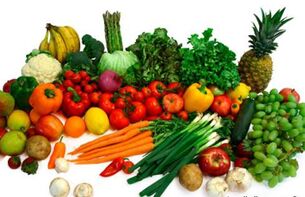
Snacks.Cashews or Brazil nuts (50 g) will satisfy your hunger perfectly. And, of course, a vegetable of your choice - a tomato or a cucumber. Can be replaced with fruit - apricots or plums (1-5 pieces).
Dinner.Mushroom stew with carrots and zucchini (250 g). Wash it with pineapple juice.
Day 2
Breakfast.Buckwheat porridge will be an excellent morning meal. It should be cooked in soy milk. Sprinkle your breakfast with green tea.
Lunch.Sorrel egg soup will give you strength. Diversify the menu with a salad of carrots, asparagus and herbs. Cherry juice will significantly improve the tone.
Snacks.Pine or walnut, almonds (50 g) will help you recharge your batteries. From fruit - apricots or plums. We recommend prunes or dried apricots (50 g).
Dinner.Cook the turkey fillet in the evening. Let the rice and vegetables become a side dish. Recharge in vitamins from cranberry juice.
Day 3
Breakfast.In the morning, treat yourself to a vegetable or fruit salad. And you can drink coffee.
Lunch.Prepare a light mushroom soup with vegetables. You will enjoy a salad made with cheese, cucumbers, eggs and apples.
Snacks.Nuts and fruits will help satisfy hunger.
Dinner.Cook the fish with boiled green beans (250-300 g).
Characteristics of owners of 3 blood groups
These people are extremely adaptable. The diet of the 3rd blood group is varied. People are distinguished by their flexibility, their balance, their creativity.
Representatives have strengths:
- strong adaptation to food and environment;
- stable immunity;
- hardening of the nervous system.
As for weaknesses, there are hardly any. A nutritional imbalance can lead to problems. This leads to autoimmune diseases.
Remember that the Rh factor does not affect your diet. 3 blood groups - negative and positive - need the same nutrients. Therefore, you can safely switch to dietary recommendations.
Menu for 3 blood groups
These people are fortunate enough to have a mixed diet. The diet of blood group 3 opens up enormous possibilities in the choice of foods.
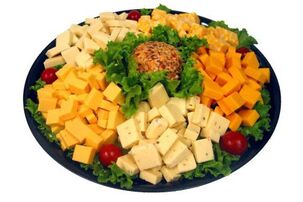
Day 1
Breakfast.Cook the rice porridge with apples (250 g). Prepare yourself an herbal tea made with St. John's Wort or peppermint.
Lunch.Cook the soup with carrot, potato and mushroom cream (250 g). You can afford a salad of sardines, eggs and cheese. Season it with low-fat sour cream or olive oil.
Snacks.Allows you to smell cashews, nuts (Brazilian or walnuts) better. Portion - about 50 g. Snack 1 cucumber or 1 carrot. And choose any fruit (1-3 pieces).
Dinner.Boil the beef with the eggplant and pepper (250 g).
Day 2
Breakfast.Cook the oatmeal porridge (250 g) in the morning.
Lunch.Cook the cauliflower (Brussels sprouts) and broccoli cream soup. You can afford any fruit salad.
Dinner:Cook the hare for the evening. Rice with vegetables will be a great side dish. Wash it off with green tea.
Day 3
Breakfast.Low fat yogurt will give you strength in the morning. Make sure to add 1 apple to your diet. Drink berry juice.
Lunch.Prepare a mushroom soup. Season it with vegetables. And of course - salad. Make it with beef, Chinese cabbage, cucumber, and cilantro.
Snacks.Eat nuts or fruit for your afternoon snack.
Dinner:Cook the fish with green beans (250-300 g).
Features of representatives of the 4th blood group
Historically speaking, it was formed relatively recently and received mystery status. Recommended for people with 4 positive blood groups, a diet based on moderation, but at the same time mixed.
Strengths of these people include:
- flexibility of the immune and nervous systems;
- combination of benefits of 2 and 3 blood groups.
To weakness:
- sensitivity of the digestive tract;
- exposure of the immune system to infections.
Approximate menu for group 4
Day 1
Breakfast.Prepare oatmeal with apricots and apples (250 g). Coffee will cheer you up.
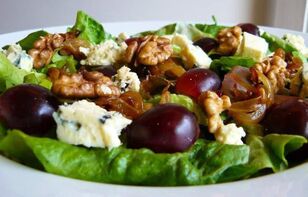
Lunch.Cook the vegetable cream soup (250 g). The salad can be made from eggs, cheese, sardines. Use sour cream or olive oil for the dressing.
Snacks.Almonds or walnuts (50 g) will satisfy your hunger perfectly. For vegetables, you can eat 1 carrot or 1 cucumber. Choose fruits to your liking (1 to 3 pcs).
Dinner.Boil the lamb, add the pepper and the eggplant (250 g).
Day 2
Breakfast.Prepare yourself some rice porridge (250 g).
Lunch.Cream soup made from different types of cabbage is perfect. Any fruit salad.
Snacks.Walnuts (50 g), dried apricots or prunes (50 g) and crispy rye breads (1 to 2 pieces) will make a great afternoon snack.
Dinner.Treat yourself to a julienne of seafood.
Day 3
Breakfast.Eat low fat yogurt and 1 pear. And you can wash it with sea buckthorn juice.
Lunch.An excellent fried soup with vegetables, salad (Chinese cabbage, tomato, turkey and cheese) will feed you perfectly.
Snacks.A snack can consist of fruits and nuts. You can drink kefir.
Dinner.Cook the fish and rice (250 to 300 g).
Conclusion
The blood group diet is a systemic meal plan. It requires a complete overhaul of the diet and does not guarantee high results at all at a specific time. But, based on the opinion of the developer, the coincidence of the diet with the need for blood allows you to perfectly get rid of extra pounds. However, this process will only start when the metabolic processes in the body are adjusted. Its author recommends his diet for those who want to lose weight gradually by cleaning all systems. Or those who have decided to seriously engage in the prevention of diseases, which also have their own specificity, dependent on the blood group.































